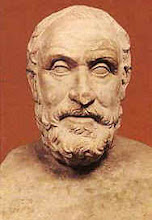 For the past two days I have been talking about the fourth spatial dimension and its implications. Today, the series continues with four-dimensional levitation, rotation, rolling, and truncation. If you have not read parts 2 and 3 of this series I strongly recommend doing so, and reading part 1 wouldn’t hurt either. Otherwise, today’s post is probably going to be very confusing.
For the past two days I have been talking about the fourth spatial dimension and its implications. Today, the series continues with four-dimensional levitation, rotation, rolling, and truncation. If you have not read parts 2 and 3 of this series I strongly recommend doing so, and reading part 1 wouldn’t hurt either. Otherwise, today’s post is probably going to be very confusing. In part 3 of this series, I explained how a four-dimensional being could touch any part of a 3D object, even the inside. Today’s first topic, levitation, is related to this. In three dimensions, it is possible to attach a 2D plane, like piece of paper, to a wall with a nail. Consider hanging up a 2D of a square: the square would rest on the 3D nail, which would perpendicular to it. Now, imagine the same thing in four dimensions with a “tetranail.” To us, the cube would be suspended in the air, held by this “tetranail,” which we would see only as a hovering sphere.
Next, I would like to discuss the rotation of 3D objects in four dimensions. Before I get to this, though, I would like to explain rotation of 2D objects in three dimensions. The key here is that an object of n-1 dimensions is being rotated in n dimensions on an n-2 axis. Consider a basic example: a square is rotated on its axis around one of its sides. This means it must be rotated out of its plane, which is different from just spinning in inside of its 2D plane. The latter means that the square is being rotated around a point; the former means it is being rotated around a line. To the “Flatland” observer, all but one line of the square disappears when the square is rotated out of the plane; when the rest of it returns, it appears to be reversed in such a way that spinning it will not turn it back to the way it was. (For example: if the letter “f” were imprinted on the inside of the square, after it is rotated the “f” would be backwards.) All this means that the four-dimensional equivalent would involve rotating a cube around one of its planar sides. The rest of it would disappear, and then re-appear on the other side of the cube. If letters were imprinted on the sides, they would be backwards. This is difficult to imagine—it would appear that it would be necessary to break the cube for it to do this, but this is not true. What we cannot see is that while the rest of the cube is “disappeared,” what it is actually doing is rotating around the remaining side on the 4D perpendicular axis.

I would also like to discuss 4D rolling rotation. Imagine a ball resting on top of a frictionless book. The book can be moved sideways in 4 directions, making the ball appear to “roll” on top of it. There are 4 perpendicular directions for it to roll. In four dimensions, though, the book would have a 3D surface, and the ball would be a glome (4D sphere). The ball now has six perpendicular dimensions to roll in—for comparison, recall that our 3D world only has 6 perpendicular directions! However, it is interesting to note that the area where the glome touches the book is still a point. (In 2D, a circle contacts with other objects at one point, and the same happens in 3D with spheres. So the same must occur in four dimensions.) Also, a 3D ball can roll in a circle, but a 4D ball has 3 possible circles to make.

Next, I would like to talk about truncation in four dimensions. Truncation, or cutting off the corners of an object, is a simple geometrical procedure. In four dimensions, though, it has some interesting implications. In 3D, when a cube’s corner is cut off it leaves a triangle. In four dimensions, when the corner of a hybercube is cut off, it leaves…a tetrahedron. I find this incredibly mind-boggling, imagining the corner of an object to be a three dimensional shape (as if a hypercube wasn’t hard enough to visualize already!). In reality it is no different than what a hypercube’s side is normally, but I think this is an interesting way to look at it.
Tomorrow the series on the fourth dimension will continue.

3 comments:
Okay I got lost here. I made it through parts 1-3 though...I like the last picture though I think that's pretty cool. Guess I should just stick to 2D and 3D shapes.
Just think of everything in terms of the analogy.
But, specifically, what part didn't make sense?
The whole idea of the tetranail holding up the 4D shape. Not really understanding that idea...I understand the 2D and 3D one though.
Post a Comment